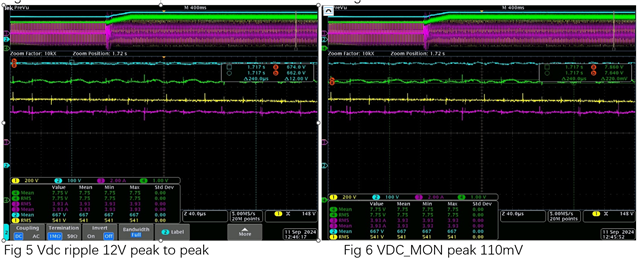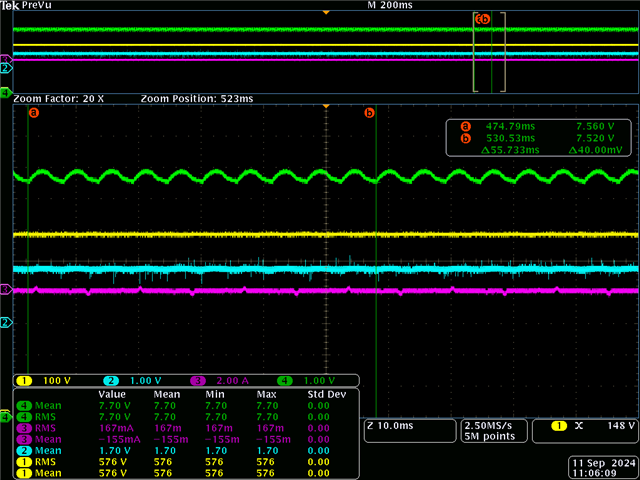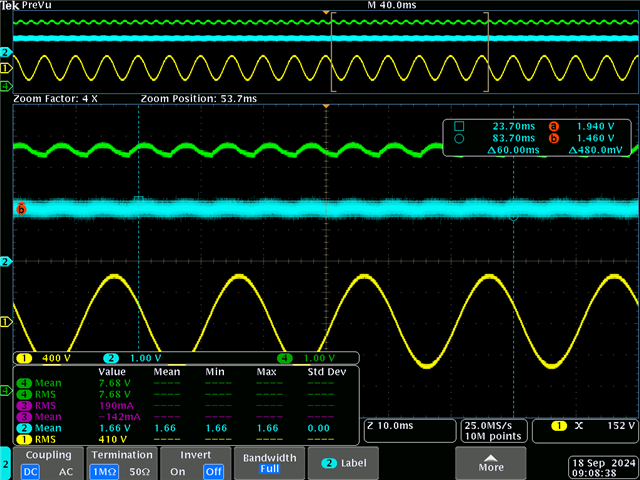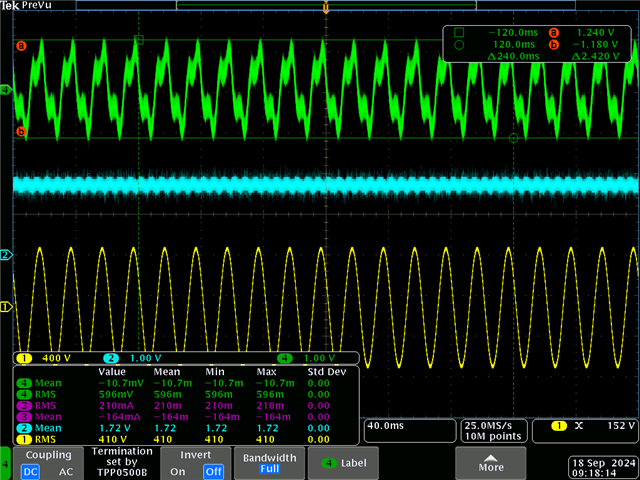Other Parts Discussed in Thread: AMC1311, AMC3311, AMC1411
Tool/software:
Here is my circuit in Pspice drawing and lab experimental oscillograms,

Fig 1 Pspice drawing
Traces in oscillograms are, 1 yellow, ac input, 2 is Vdc_hv, 3 is current, 4 is Vdc_c, only traces 2 and 4 in concern in this note.
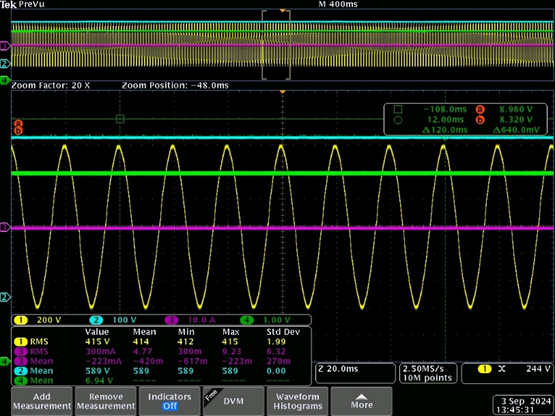
Fig 2 waveform at idle state
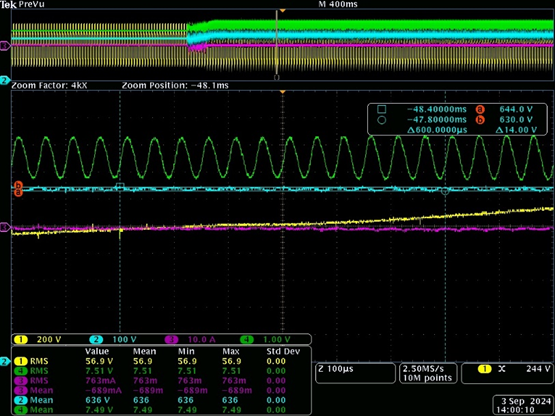
Fig 3 measured Vdc_hv ripple at 14V peak to peak
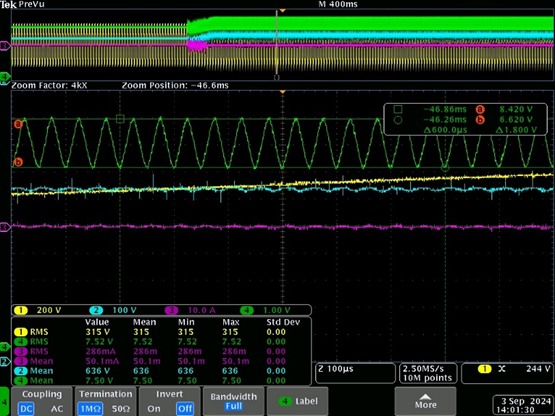
Fig 4 measured Vdc_c ripple at 1.8V peak to peak
This circuit is for Active Front End (PWM rectifier DC High voltage sensor), but it is not behaviors like simulation, it amplifies the ac components in much large gain than the dc component.
In Fig 2 idle state, the input output is stable and clean, the dc gain 6.94/589 = 0.011783. Fig 3 shows no load boost waveforms Vdc_hv ripple pk-pk 14V, Fig 4 Vdc_c ripple is 1.8V pk-pk, based gain = 7.5V/636 = 0.011792, the ripple magnitude is equivalent to 76V, not 7V in real vdc, this means that the ripple has been amplified 10 times!!!??? The true ripple should be 0.011792*7V = 0.0825V, peak to peak 0.1651V. There seems near 180 degrees phase shift.
The simulated frequency response about 200kHz width, the gain for ripple (20kHz) should be the same as dc component, but test experimental shows the ripple gain is 10 time higher.
What cause this problem, I think AMC1311 with capacitive isolation technology may too sensitive or love ac component, also I use AMC1311 for ac voltage sensor, it also has problem when power MOSFET start switching, I will talk it in another article in future. Question is, what can I do to suppress or make the ripple output on Vdc_c correct? Is this a known problem for TI?
Thank you in advance, Jian Li




